
130th Edition: October 2024
Key points:
- The Global Roundtable for Sustainable Beef (GRSB) shines a spotlight on the importance of developing countries.
- Typhoon Yagi causes severe destruction in Vietnam and surrounding countries.
- Protein supply is front of mind for Indonesia with some exotic alternatives being considered and the Philippine Senate approved a 7.6 billion Philippine Peso (197 million AUD) fund to boost the country’s livestock, poultry, and dairy industries and support small farmers.
Regional Trends and Overview
I had the privilege of attending the Global Conference on Sustainable Beef in Uruguay, sponsored by the Better Choices Program (focused on pain mitigation) and my company, Impetus Animal Welfare. This biennial event, organised by the Global Roundtable for Sustainable Beef (GRSB), brings together a diverse group of members, including national Sustainability Frameworks like the Australian Beef Sustainability Framework (ABSF) and global companies such as McDonald’s, JBS, Hilton Foods, and pharmaceutical firms.
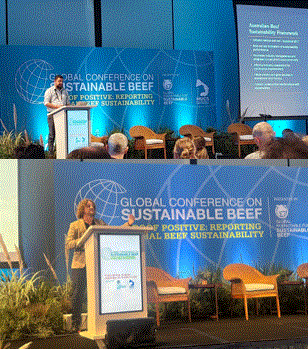 I was invited to speak on animal health and welfare, emphasising practical ways to advance welfare standards in the global cattle industry. It is important Australia continues to lead these discussions, particularly with our proactivity in over-the-counter registration of pain relief products like Trisolfen and buccal meloxicam. And the Australian Lot Feeders Association’s (ALFA) goal of implementing shade in all member feedlots by 2026—a practice uncommon in the U.S. but crucial for improving animal welfare. Although animal welfare was a key focus at the conference, it remains secondary in driving the broader sustainability conversation and indexing or financial instruments may be key to shift it beyond a desirable virtue or a business cost
I was invited to speak on animal health and welfare, emphasising practical ways to advance welfare standards in the global cattle industry. It is important Australia continues to lead these discussions, particularly with our proactivity in over-the-counter registration of pain relief products like Trisolfen and buccal meloxicam. And the Australian Lot Feeders Association’s (ALFA) goal of implementing shade in all member feedlots by 2026—a practice uncommon in the U.S. but crucial for improving animal welfare. Although animal welfare was a key focus at the conference, it remains secondary in driving the broader sustainability conversation and indexing or financial instruments may be key to shift it beyond a desirable virtue or a business cost
Photos: Jacob Betros (ABSF) and Dr Michael Patching presenting at the GRSB conference.
One highlight of the event was the premiere of A World Without Cows, a documentary funded by Alltech to challenge the narrative and explore the role of cattle in various global contexts—from their impact on poverty, nutrition, and culture in Africa to their contribution to soil heath and carbon capture. The full documentary is set to be released soon and presents important discussion points on the value of cattle that everyone outside the industry should watch.
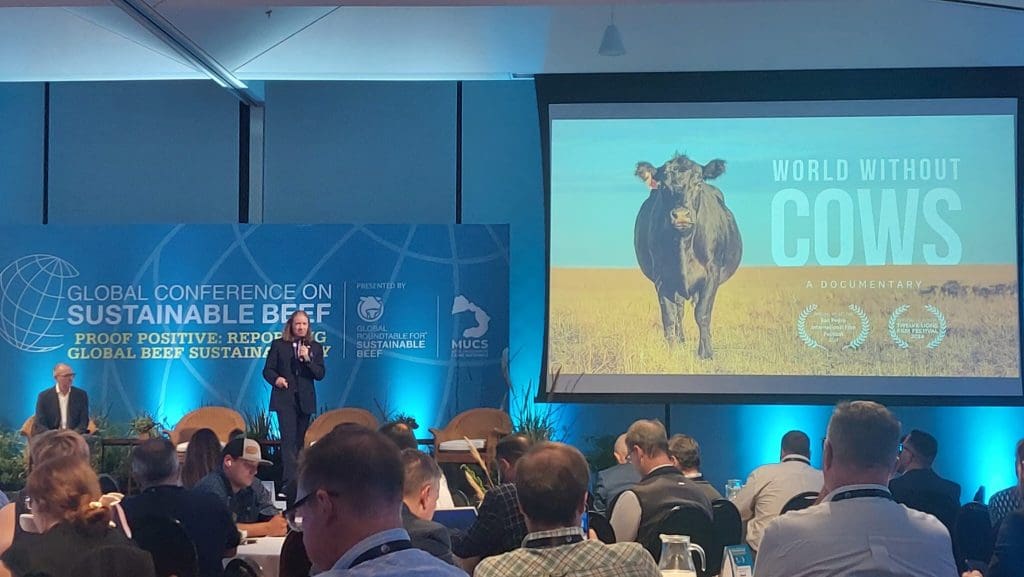
Photo: Alltech CEO and President Dr Mark Lyons introducing the world premier of A World Without Cows at the GRSB conference Oct 2024.
The GRSB, active for over 12 years, has influenced global sustainability policies and shifted narratives around beef production through its collaboration with national roundtables. Beyond promoting animal welfare, a major takeaway from the conference was the importance of improving underdeveloped cattle industries. Boosting vaccination rates, improving animal health, and reducing the number of idle cattle (those not producing milk, meat, or calves yet still emitting methane) would significantly reduce global emissions. Asia, particularly India and China, plays a crucial role in this effort. Enhancing cattle productivity and health could have a meaningful impact on global cattle emissions.
Another important insight came from a discussion between Minerva, the Uruguayan Angus Association, and McDonald’s. They noted that even with continuous communication, it takes them 4 years for market signals to influence production changes. In Asia, particularly South-East Asia, beef production lacks clear, sustained market signals, as large beef buyers prefer the consistency and quality of imported products or local companies look for short term profitability. For those looking to invest in Asia’s cattle industry, I believe we need to engage or establish strong offtake agreements with a focus on long-term gains. China exports should be considered either a very long term goal, or unrealistic. Therefore it is likely going to require a company (meat buyer) to invest for a 5-10 year goal to source locally.
A large company with high sustainability and animal welfare requirements could provide enough of a market driver to help local cattle producers and the live export market prioritise specific cattle, enhance vaccination programs, and develop targeted genetics initiatives. This approach would benefit trade, lower disease risks to Australia, and make cattle production in marginal areas more efficient, ultimately reducing the global industry’s environmental footprint.
Indonesia: Slaughter Steers $4.65 AUD per kg live weight (IDR 10,385 = $1 AUD)
Beef Prices
Beef prices in local markets have remained stable as of late September. The average daily price per kilogram stood at IDR 135,000 to 138,000 ($13 to 1$3.29 AUD), from IDR 138,000 to 140,000($13.38 to $13.57 AUD) per kg last month. Meanwhile, beef carcass prices have experienced a slight dip, with the average per kilogram dropping from IDR 92,000 to 93,000($9.02 to $8.96 AUD) last month to IDR 91,000-92,000 ($8.76 to $8.86 AUD) per kg currently. The price of broiler chickens as the main protein source for most households is averaging around IDR 37,000 ($3.56 AUD) per kg.
Stunning and Halal Standards: A Controversy in Slaughterhouses
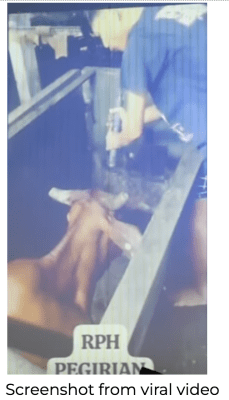 A viral video circulating on ‘X’ and WhatsApp platforms, filmed at an abattoir in Surabaya, East Java, has sparked heated debate over halal practices in Indonesia. The footage, which shows the use of stunning equipment on Australian cattle, only captured the stunning process and not the entire slaughter, leading to the false impression that the stunning method, intended to render the cattle unconscious, was causing their death. However, the abattoir’s director clarified that the stunning used was non-penetrative and fully compliant with both Indonesian regulations and halal standards. He stressed that the video was misleading, as it did not show the full process, including the halal slaughter carried out by certified personnel.
A viral video circulating on ‘X’ and WhatsApp platforms, filmed at an abattoir in Surabaya, East Java, has sparked heated debate over halal practices in Indonesia. The footage, which shows the use of stunning equipment on Australian cattle, only captured the stunning process and not the entire slaughter, leading to the false impression that the stunning method, intended to render the cattle unconscious, was causing their death. However, the abattoir’s director clarified that the stunning used was non-penetrative and fully compliant with both Indonesian regulations and halal standards. He stressed that the video was misleading, as it did not show the full process, including the halal slaughter carried out by certified personnel.
The controversy reflects broader concerns within Indonesia’s meat industry about maintaining halal integrity while adopting animal welfare practices such as stunning. Meat & Livestock Australia (MLA) and Indonesian Ulema Council (MUI), confirmed the non-penetrative stunning method which renders cattle unconscious before slaughtered is allowed under Indonesian Halal requirements. Still, such incidents risk straining the trust between Indonesian consumers and imported Australian cattle products and is difficult to counteract given the asymmetrical reach of viral videos vs clarification statements from the abattoir and industry representatives.
Protein Sources: Cattle from Brazil & Fish Milk
Indonesia remains reliant on imports from Australia however recent developments suggest a potential diversification strategy. The Indonesian government’s recent decision to enter a partnership with Brazil for dairy cow imports could signal a shift in its trade strategy. The deal, worth around IDR 4.5 trillion, aims to reduce Indonesia’s dependency on milk imports by increasing local production. The Minister of Agriculture, Andi Amran Sulaiman, has also given the “green light” for Qatar’s agricultural company, Baladna, to invest in Indonesia’s dairy farming industry. This opportunity arose from a discussion between Minister Amran and Indonesia’s Ambassador to Qatar. Amran asked whether Baladna could produce two million tons of milk annually, a challenge that the company accepted.
Besides the Prabowo-Gibran administration’s plans to boost the domestic dairy industry, it has also released plans which include 1.5 million hectares of land allocations for cattle farming and the introduction of innovative concepts like “fish milk,” developed through fish protein hydrolysate. The Ministry of Marine Affairs and Fisheries (MMAF) is currently building a Fish Protein Hydrolysate factory in Pekalongan, Central Java, with a budget of 8 billion IDR (750,000 AUD). These initiatives are part of a broader push to meet the growing protein demands, especially for school meal programs. The idea of fish milk has garnered scepticism all over social media, particularly as it challenges the traditional concept of dairy. Yet, it underscores the urgency with which Indonesia seeks alternative protein sources.
Vietnam: Slaughter Steers $4.58 AUD per kg live weight (VND 16,802 = $1 AUD)
Typhoon Yagi has caused significant damage, loss of life, damage to houses, infrastructure and to Vietnam’s agricultural sector, with losses estimated at $2.44 billion(USD), including the destruction of 300,000 hectares of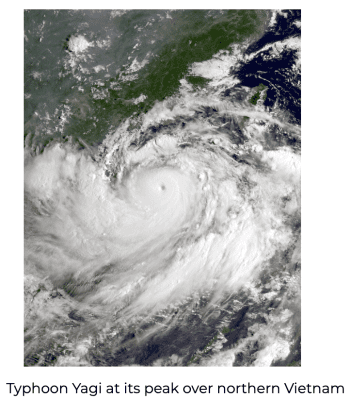 crops and the loss of 30,000 cattle. This disaster, the largest storm to hit Vietnam in decades, has devastated cattle farming, compounding the country’s challenges in livestock production. The loss of cattle will likely affect Vietnam’s beef supply chain and export potential, increasing reliance on imports to meet domestic demand, while recovery efforts will require substantial international support.
crops and the loss of 30,000 cattle. This disaster, the largest storm to hit Vietnam in decades, has devastated cattle farming, compounding the country’s challenges in livestock production. The loss of cattle will likely affect Vietnam’s beef supply chain and export potential, increasing reliance on imports to meet domestic demand, while recovery efforts will require substantial international support.
Cambodia, Thailand, Laos and Myanmar also experienced heavy rains and flooding with livestock feed crops impacted throughout the region. The impact on livestock feed crops is expected to apply protracted pressure to livestock production costs. Pork and poultry prices have already increased in the wake of Yagi’s destruction with impacts on beef prices less severe so far.
Philippines: Slaughter Steers $3.39 AUD per kg Live weight (P38.24 = $1 AUD)
Prices
The Australian Dollar appreciated against the Philippine Peso, In wet markets and supermarkets the beef rump prices sit at about P390 per kg ($10.19 AUD) and P450 per kg ($11.75 AUD) respectively. Local cattle prices in Mindanao are still pegged between P130 per kg ($3.40 AUD) live weight, and the hot carcass meat price is approximately P290 per kg ($7.57 AUD).
Live pork prices are around P170 per kg ($4.44 AUD), and pork carcass goes for P240.00 per kg ($6.27 AUD). In wet markets, non-branded broiler chicken is priced at P174.00 per kg ($4.54 AUD), while in supermarkets, the Magnolia brand is priced at P195.00 per kg ($5.09 AUD).
Photos: Local meat and livestock sales in Mindanao
Senate Approves Bill to Boost Livestock, Poultry, and Dairy Industries
On August 12, 2024, the Philippine Senate approved Senate Bill No. 2558, aimed at revitalising the country’s livestock, poultry, and dairy (LPD) sectors. The bill seeks to enhance productivity and competitiveness by creating a comprehensive development roadmap and streamlining the functions of government agencies responsible for the industry. A key feature of the bill is the creation of a Livestock, Poultry, and Dairy Competitiveness Enhancement Fund, with an annual allocation of up to P7.8 billion (197 million AUD) sourced from tariffs on imported LPD products.
Sen. Cynthia Villar, principal author and sponsor, highlighted the vital role of the LPD industry, which contributed over a quarter of the agricultural output in 2023 and provided livelihood to over 2.8 million farmers. The bill addresses long-standing challenges, such as fragmented government support and insufficient funding.
With a growing population and increasing demand for food, the bill aims to secure the supply of pork, chicken, and dairy products, which make up 52% of the nation’s protein intake and could rise to 58% by 2030. The programme will also help address the country’s dependency on imported milk, as domestic dairy production in 2022 was only 30,028 metric tons—less than 1% of the total supply.
Australia: Feeder Steers Darwin $3.20, Townsville $2.80
Two ‘G Class’ cattle boats, the Gelbray Express and Gudali Express, have been sitting in Singapore at anchor for over a week, a sign of the subdued trading conditions as reported in Beef Central last week. They are accompanied by the former Ocean Ute, now named the Elsalih, which is undergoing maintenance following its recent change of owners.
2024 Year to September figures for cattle sea freight across Asia by state
Source: DAFF
Year 2024 to September for cattle sea freight comparison across Asian markets
Source: DAFF

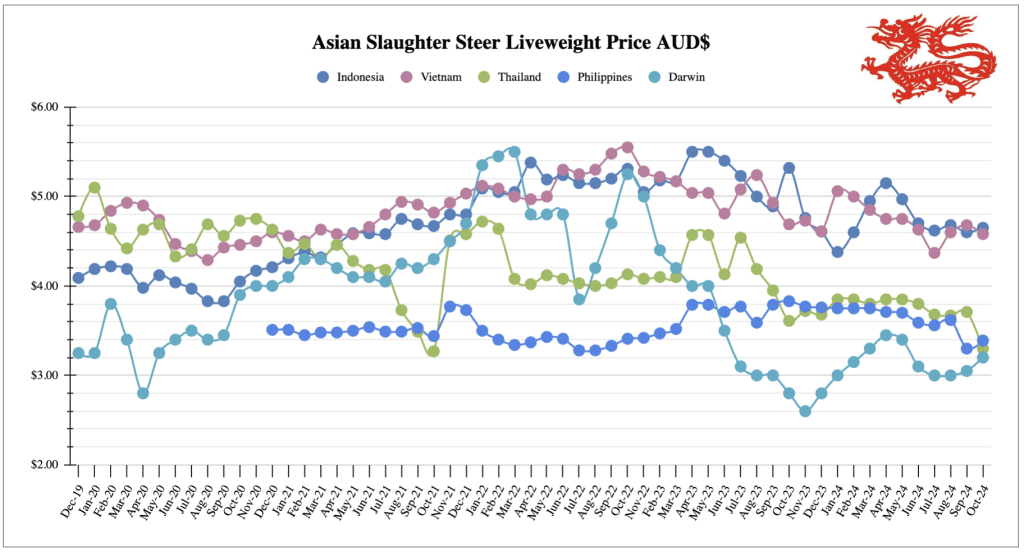
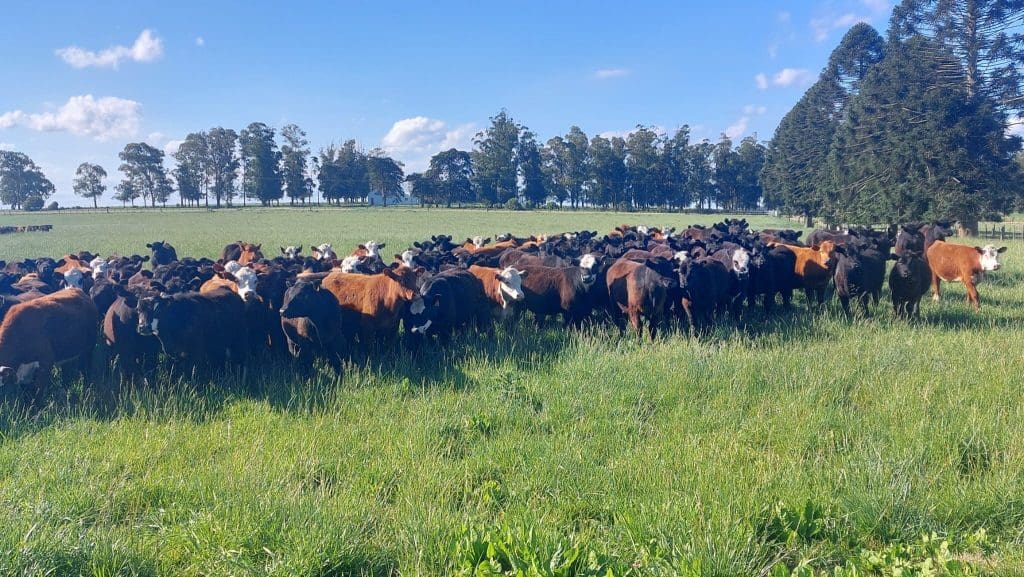



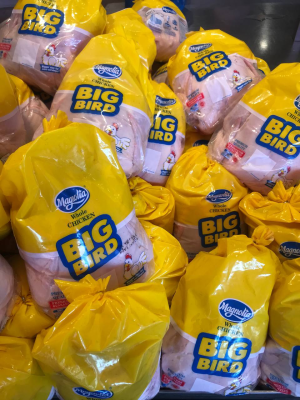


HAVE YOUR SAY